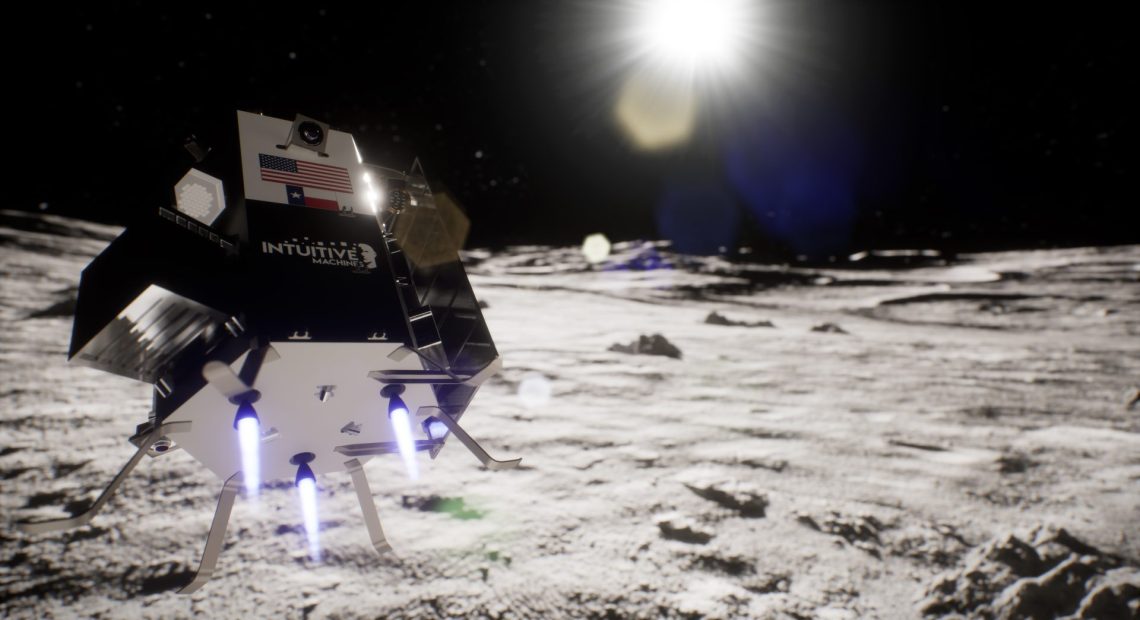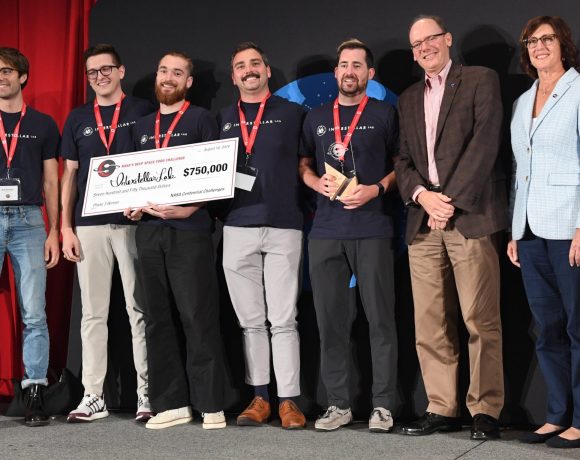Intuitive Machines finalises lunar landing site for IM-2 mission

November 2024 to January 2025 scheduling
Intuitive Machines has finalised the landing site for its highly anticipated IM-2 lunar prospecting mission, which has already sold out. The mission to explore the Moon’s South Pole for water ice and other volatiles marks a significant step in the US company’s ambitious plans for deep space exploration.
The chosen landing site, located in a 200-metre diameter elliptical region on the Shackleton Connecting Ridge, was selected in collaboration with NASA.
This site was chosen for its favourable terrain, optimal Earth communications position, and advantageous solar angles for power generation. To maximise solar power, the IM-2 mission is scheduled between November 2024 and January 2025, with a tentative launch date of late 2024.
Steve Altemus, CEO of Intuitive Machines, said: “The successful sale of our IM-2 mission underscores our strategy in supporting a burgeoning deep space economy. Our world-class expertise in landing site selection is crucial for identifying valuable lunar resources, which will play a key role in the future of the lunar economy.”
The finalisation of the IM-2 mission’s landing site also concludes a previously announced pending task order with NASA. With over $3 billion in upcoming award decisions, Intuitive Machines continues to lead space exploration through its diverse services, including lunar payload deliveries, command control, and autonomous operations.
Successful IM-1 mission
Before its IM-2 lunar mission, Intuitive Machines celebrated a landmark achievement with the successful completion of its IM-1 mission in February 2024. The mission, which involved the soft landing of the company’s Nova-C class lunar lander, Odysseus, on the Moon’s South Pole, marks the United States’ first lunar landing in over 50 years since NASA’s Apollo 17 programme.
The success of IM-1 demonstrated groundbreaking efficiency and economics in lunar landings, fundamentally altering the cost structure for both commercial customers and NASA.
The IM-1 mission also highlighted the critical role of international collaboration, with support from radio astronomy dishes across 12 countries and a robust US domestic supply chain.
Altemus expressed confidence in the future: “Our success with the IM-1 mission reflects our commitment to pioneering the future of the lunar economy. We are poised to continue leading in the cislunar market and advancing space exploration technology.”
Both missions underscore Intuitive Machines’ position as a critical player in the evolving space industry, focusing on profound space exploration and technological innovation.
Featured image: CGI of the IM-2 lunar lander at the South Pole of the Moon. Credit: Intuitive Machines












